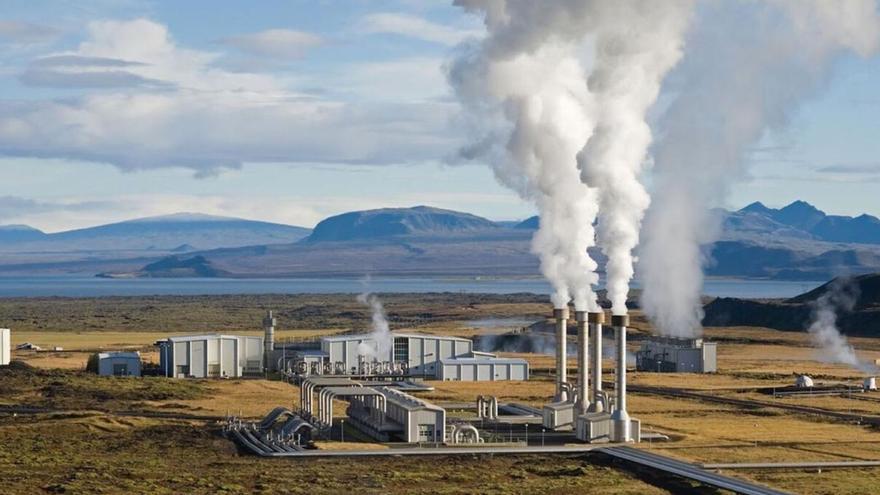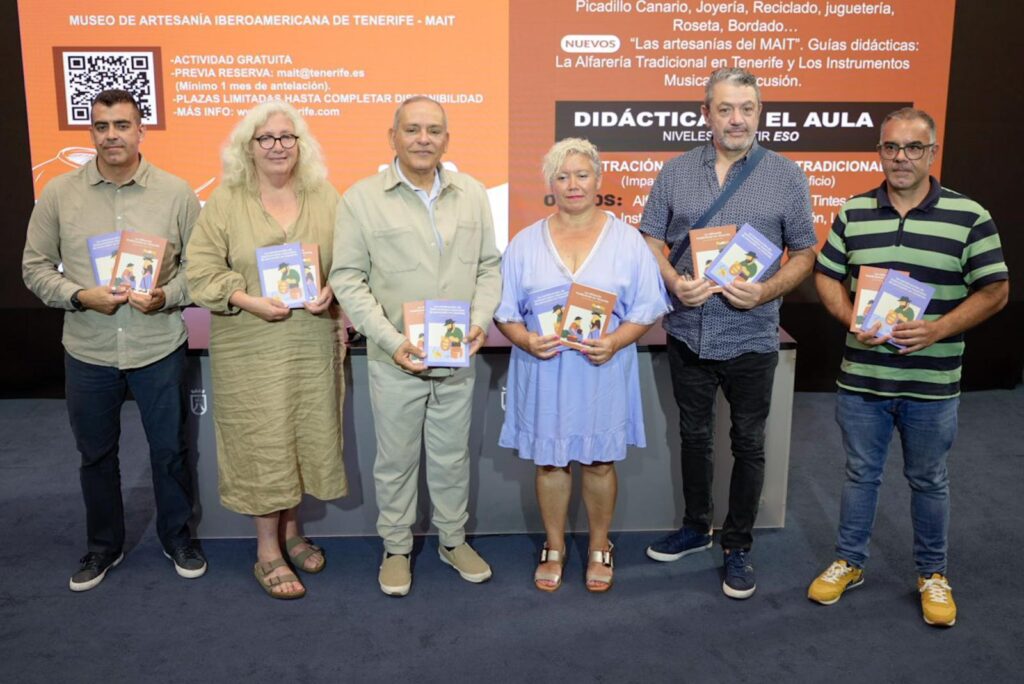
Tenerife embarks on a treasure hunt for clean, manageable and inexhaustible geothermal energy under the surface of the Island. The Ministry of Ecological Transition and Demographic Challenge has just published the first call for granting aid for carrying out feasibility studies for obtaining renewable energy that is obtained by taking advantage of the heat from inside the Earth.
In total there are 120 million euros, of which 60 are for Canary Islands and 15 for each of the islands of Tenerife, La Palma and Gran Canaria. He President of the Council of Tenerife acting, Pedro Martín, had “satisfactory” contacts a few days ago with several companies specialized in the mining sector to “go hand in hand” in a public-private investment “initially large but very productive in the long run” to develop surveys and prospecting.
state subsidy
The objective of the call for the state subsidy, published on the 8th in the Official State Gazette (BOE) and with Next Generation European funds is to “promote the knowledge, location and availability of the resource in the national territory, in particular, in Canary Islands”. Also “favor the development of the first projects, of an innovative nature, of deep geothermal energy for the production of electricity or direct thermal uses.”
deep geothermal
Taking advantage of the earth’s energy results in less external energy dependence, reduces the consumption of fossil fuels and reinforces the security of supply, by providing a constant flow of energy. The commitment is part of Spain’s energy transition strategy, since the Integrated National Energy and Climate Plan establishes a geothermal power target to be installed for electricity production of 15 megawatts –one megawatt is equivalent to one million watts– by 2025 and 30 megawatts of electricity –produced by a power station– by the 2030 threshold. The Canary Islands are home to the largest medium- and high-temperature geothermal resource in Spain, which could supply a large part of the Archipelago’s electricity demand. Hence, in the insular geography, deep geothermal energy feasibility studies are a priority, financed by the Deep Geothermal Program of the European Union.
Institutional boost
Pedro Martín explains that “in recent years we have more than doubled the generation of renewable energy through the Technological Institute (ITER), the company of the Cabildo de Tenerife in charge of this work. But it’s not enough”. For this reason, he adds, “we will promote actions. Mainly three. In the first place, we are going to change 29 wind turbines for five of the latest generation that produce more. On the other hand, we will also launch a 200 megawatt photovoltaic project with the concept of democratizing energy through its distribution among self-employed SMEs and municipalities. That what is generated here goes to the citizens of Tenerife and not to the large companies in the sector. The third pillar is geothermal. In this regard, Martín points out that “the initial investment is expensive, but if the ideal place is found below the surface, then there are only advantages, as it is a non-polluting and inexhaustible source of energy.” The insular president has already held meetings with specialized companies “to go hand in hand” in possible surveys and surveys. These “important” firms have already applied for licenses to drill or carried out studies as well as Involcan, whose technicians “crew the project.” Now it is about sharing data and information and, Pedro Martín points out, “hitting the right spot in the territory to obtain the energy that is sought in the subsoil.” Tenerife, like the other islands, would have the advantage of its volcanic origin. It is as simple in theory as generating energy with the heat of volcanic soils. Tenerife and the Canary Islands are ideal for that. Pedro Martín assures to conclude that “the government of the Cabildo in the next term will have everything ready to develop the initiative.”
regional contest
Geothermal exploration work involves a cost of 1 to 2 million euros for every 100 square kilometers of area or, what is the same, between 10,000 and 20,000 euros for each square kilometer. The geothermal works carried out in the Canary Islands in the last 12 years have involved an investment of 7 million euros and have focused on Tenerife, Gran Canaria and La Palma. The Cabildo de Tenerife is waiting to know the results of a tender opened by the Department of Industry of the Government of the Canary Islands to select the best geothermal resource research proposals. In said contest, the Cabildo presented four proposals that affect four different areas of the island, which represent an area of more than 140 square kilometers.
huge benefits
Geothermal energy is a renewable and sustainable resource. The environmental footprint is much smaller than that of other energy sources. In addition, it is available 24 hours a day and has a predictable performance, which gives stability to power generation. Also flexible, insofar as it operates continuously to meet the minimum level of power demand and can be adapted to meet variable levels. Finally, geothermal energy is versatile and has multiple applications.
Involcan’s work
The Instituto Volcanológico de Canarias (Involcan), dependent on the Cabildo de Tenerife, has developed various activities in recent years as part of the Geothermal Development project in Tenerife. Among them, the geochemical prospecting in detail in selected areas of the mining domains of Abeque, Berolo and Garehagua in different areas of the Island stands out. Involcan also carried out a geochemical study of gases and groundwater on the Island as well as other magnetotelluric studies – a technique that it measures from the surface the temporary fluctuations of the electromagnetic fields through soundings–. The public entity also carried out a spatial characterization of the microseismicity of Tenerife. Finally, Involcan has worked on the generation of a model of the structures of the island’s crust.
A national bet
The Recovery, Transformation and Resilience Plan reserves one of its strategic lines, number 1, “for the development of renewables and their integration into production processes and construction”, an area in which the 60 million allocated to the rest of the state are framed. The 60 focused specifically on the Canary Islands correspond to line 2, which promotes “sustainable energy on the islands”. The Institute for Energy Diversification and Saving (IDAE), a body attached to the Ministry, will manage the financing line. It seeks to promote feasibility studies that include exploratory actions to analyze and quantify the geothermal resource in the Spanish geography. Applications for the Deep Geothermal call may be submitted between June 15 and September 7 of this year. The eligible actions must be carried out before January 31, 2026. | JDM
















